
The title of Nathan Juran’s 1957 Them! imitation is self-explanatory. Despite a decent monster and some glimpses of Universal class, this William Alland production is derivative and soulless. 4/10

The Deadly Mantis. 1957, USA. Directed by Nathan Juran. Written by Martin Berkeley & William Alland. Starring: Craig Stevens, William Hopper, Alix Talton. Produced by William Alland. IMDb: 5.1/10. Rotten Tomatoes: N/A. Metacritic: N/A.
Strange deaths occur along the DEW line — the US-Canadian radar defense line in the arctic. When something that looks like a giant claw is found among the wreckage of a plane, the army calls in the services of palaeontoloigist Dr. Ned Jackson (William Hopper) and his not-really assistant Marge Blaine (Alix Talton), editor of the museum’s magazine. After som hum and ho, Jackson is able to deduce that they are dealing with a prehistoric creature that has thawed out of the Arctic ice and returned to life, a 200-foot preying mantis. And now it is on a straight line toward the tropics, leaving havoc and death in its path.
You know what kind of movie you’re in for when it begins with five minutes of military stock footage — in this case seemingly taken from a documentary about the construction of the DEW line. When it then proceeds to five minutes of army personnel sitting in offices talking on radio, you fear the worst. However, this is Universal and not Monogram, and this 1957 clunker is produced by William Alland and directed by Nathan Juran, and that alone should guarantee at least some measure of quality, despite whatever measly budget the film was given. The film found a renewed fanbase in 1997, when it was featured on MST3K.

Jackson and Blaine are shipped out to the arctic base where Ms. Blaine makes quite an impression on the army boys — the film’s romantic hero Col. Parkman (Craig Stevens) tells her: “Well, we have a little joke up here. The boys say there’s a girl behind every tree. Only try and find a tree.” During their short time together a romance builds between Parkman and Blaine. The mantis, on the other hand, is spotted and Parkman leads an aerial assault, forcing it down into the “Manhattan Tunnel”, where the final confrontation takes place.
Background & Analysis

In 1954 Warner Bros. released Them! (review), the first giant bug film, and according to many critics, the best. A few imitators came along in the following years, but it was in 1957 that the giant bug craze really caught on as a B-movie mania. The Deadly Mantis was the first of a long string of creepy crawlies that would menace movie theatres in the late 50’s, and it wears its inspirations on its sleeve.
Universal made some of the best SF movies of the early 50’s, with films such as It Came from Outer Space (1953, review), Creature from the Black Lagoon (1954, review), Tarantula (1955, review) and This Island Earth (1955, review). What all of these films had in common was that they were produced by William Alland. However, after the semi-flop of the lastly mentioned film, the studio started slashing the budget for their SF output, and the result was on painful display in The Mole People (1956, review). Alland suggested one of the ways the studio could save money was to use stock footage, a lesson probably learned from Sam Katzman at Allied Artists. So when it came time for Alland to produce The Deadly Mantis, he put his money where his mouth was: at least 20 percent of the movie, if not more, is made up of stock footage — much of it from Air Force short films. There is also a long sequence of Inuits fleeing the mantis. This is pilfered from the 1939 Republic film S.O.S. Tidal Wave.
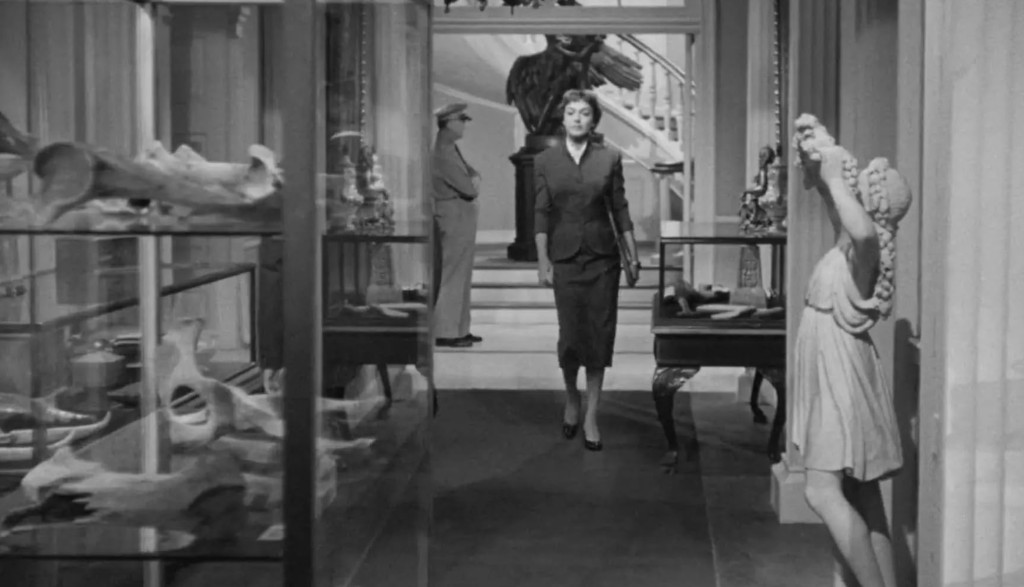
It was Alland that came up with the story for The Deadly Mantis, and he handed screenplay duties to his go-to writer Martin Berkeley, who had previously written Revenge of the Creature (1954, review) and Tarantula. Both these scripts had their share of problems, many of which are exacerbated in The Deadly Mantis. One of these problems is the lack of a strong and relatable central character. It’s unclear who the hero is. The person we mainly follow, and who for all intents and purposes is the main character is Dr. Jackson (Hopper). But its is Col. Farnham (Stevens) who leads the attacks at the monster, and who gets the girl at the end. This would all be OK, if the character of Col. Farnham had any hint of personality, character arc or even any lines that are not exposition. Craig Stevens was a decent actor, and I’m sure he tries his best, but the way Farnham is written, there is simply nothing to work with here.

Another problem is one frequently made with films like these: the screenwriter has the characters run around solving mysteries that are already known to the audience. Half of the movie is spent as if it were a mystery that the culprit is a giant mantis. Around halfway through, Dr. Jackson makes a dramatic speech and a bombastic reveal of his findings, as if the audience would be shocked to hear that we are dealing with a deadly mantis. This is absurd, since the film is called The Deadly Mantis. Berkeley made the same mistake with Tarantula. Having the protagonists solve a mystery known to the audience can sometimes work, but then you have to make it more interesting than this. The investigation itself must serve a story purpose that is not simply padding out the duration of the film.

However, the model work is partially quite good. The models used for the shots of the mantis walking and wreaking havoc are well made and quite scary — with the caveat that we never see the tail end of the insect. The model of the flying mantis, however, is rather poor. According to the American Film Institute, a press junket at the time of the film’s release stated that the crew created a full-size model measuring 200 feet (60 meters) out of papier mache and fitted hydraulics inside it. This piece of information has since made its way to Wikipedia as a fact. However, the press junket claim was probably just a piece of PR bogus. The squid in 20,000 Leagues Under the Sea (1955, review) was less than half that size, and that was a 6 million dollar movie. The Deadly Mantis was probably closer to $160,000. There is no way Universal made a prop 200 feet long for this movie, much less allowed Alland to do anything as costly as build a monster with hydraulics. Furthermore, if they would have actually made such a monstrosity, they would have shot it with the actors in the same frame. Now we never see the mantis interacting with the actors, until the very final scene, where the actors are clearly dropped into the frame in post production.
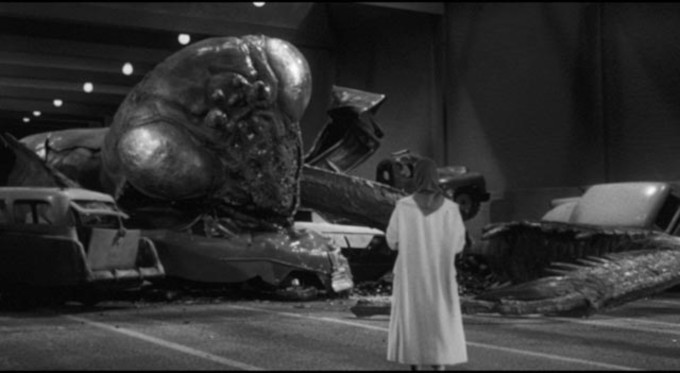
The acting is mostly indifferent. Former beuty pageant Alix Talton gives a sprightly performance, and William Hopper as Dr. Jackson has good rapport with her. The same can not be said about the nominal hero Craig Stevens, whose romance with Talton comes so completely out of the blue that even the most hardened B-movie fan is left scratching their head. They are hardly even together in the same room before Stevens sticks his tongue down her throat! It doesn’t help that his character is as interesting as wallpaper. Both Hopper and Stevens rose to TV fame later on, the former in Perry Mason and the latter as the titular character in Peter Gunn. Mara Corday, the star of Tarantula, and later The Giant Claw (1957, review) and The Black Scorpion (1957, review) was originally intended for the role of Marge Blaine, but she thought the script was so poor that she made herself extremely difficult, and was fired by the studio. In an interview with film historian Tom Weaver, though, Corday said her firing didn’t really have anything to do with her behaviour regarding the film, as Universal fired most of its stock in 1957, as part of a restructuring of its organisation. This was a period when studios increasingly dropped much of its acting stock.
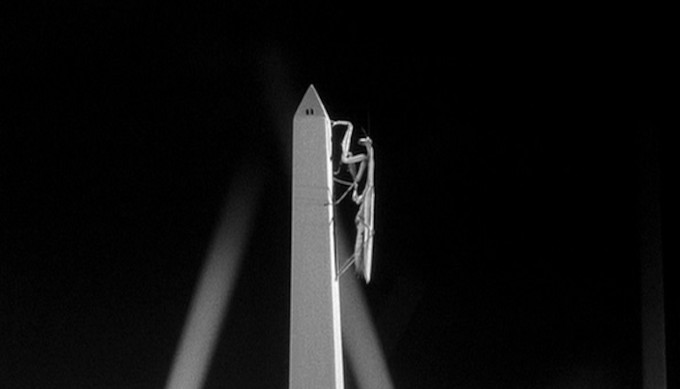
All in all, The Deadly Mantis feels like an amalgam of two much better movies past, Them! and The Thing from Another World (1951, review). From the latter, the film borrows its Arctic setting and the monster thawed out of ice. Given the film’s budget limitations, a confined story set at an Arctic radar station might have made for a good film. Instead, Alland and Berkeley try to make a big-budget adventure without the resourses, by adhering strictly to the formula of Them! (and before that, The Beast from 20,000 Fathoms, 1953, review), that is; scientists and military working together to figure out what is causing havoc, as some menace makes its way across North America, culminating in a showdown in a major city. In the two former pictures, this works, as the audience isn’t entirey sure what the monster is. Here, we know it is a giant mantis, so there is no real mystery or tension. We’re just waiting for the showdown.

There are a few good scenes. The mantis’ attack on the radar station is fairly lively. Director Nathan Juran copies Tarantula by having the mantis peep through a window at Ms. Blaine, before it starts hacking at the roof. Even if the actors and the model are never in the same shot, Juran does a decent job with the following scene, in which soldiers are hurling themselves over barrels to get away from the monster. Also, the climax in which the army attacks the mantis in the Manhattan tunnel is decent enough entertainment, even if it is not nearly as exciting as its inspiration in Them!. There’s also a nice nod to both King Kong and Earth vs. the Flying Saucers (1956, review) with the mantis climbing the Washington Monument. A real mantis was used for this shot, and it looks quite nice, which begs the question why Juran didn’t use more footage of real insects. But these scenes are too few and far between, and way too much in between is padding.
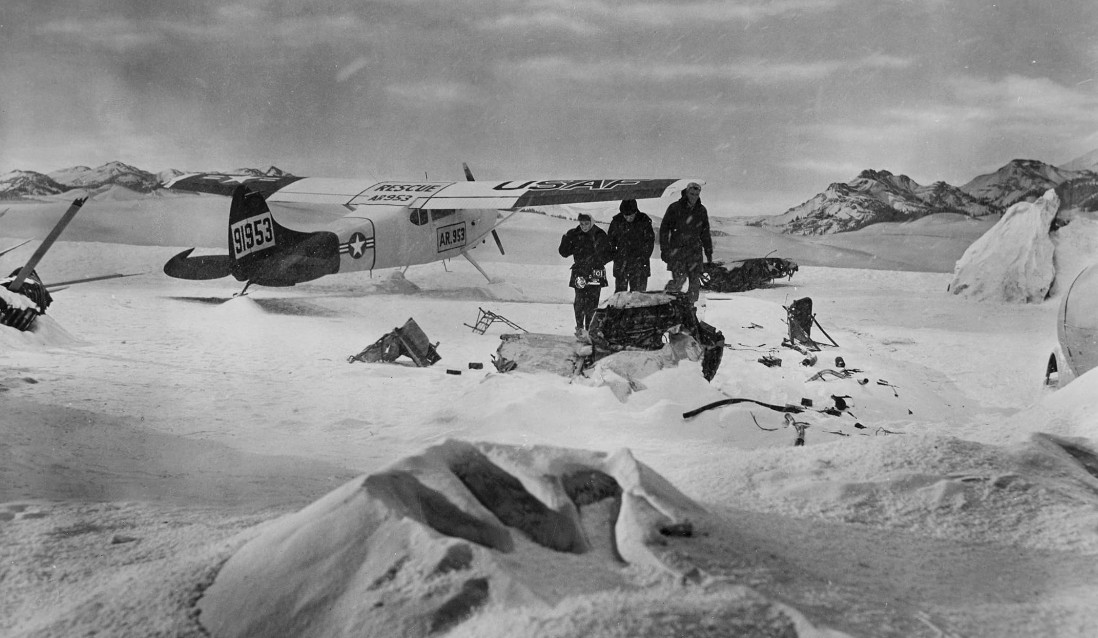
If you want to look for messages in The Deadly Mantis, the story naturally continues the string movies dealing with American cold war invasion anxieties. Somewhat surprisingly, perhaps, the menace in this film isn’t nuclear-powered, but rather thawed from the Arctic ice sheet. The movie begins with a map of the world, and inserts a volcanic eruption near Antarctica. A voice-over tells us that “for every action there is a reaction”, and the camera then pans up to the Arctic, where we see ice sheets melting and are shown a mantis trapped in a block of ice. I’m not sure exactly what this is supposed to demonstrate, but Nathan Juran has said he came up with this intro. In retrospect one might view it as an early warning about global warming, but I suspect this is reading too much into it.
If you want to go looking for a theme, then one might say that The Deadly Mantis plays like a recruitment video for the US army. Much ado is made of the radar defence system (ripped from a military instruction video), and the US army and air force are displayed prominently throughout the movie in wholly flattering terms. While it may be the scientists who identify the monster, it is the military that tracks it down and destroys it, with little help from the eggheads. However, this film is not really about themes, but about delivering a monster movie to the masses for pure exploitation reasons.

Nathan Juran would go on to much bigger and better things with Ray Harryhausen, but there’s little of that magic on display in The Deadly Mantis. William Alland gets a lot of credit as the producer of almost the entire SF catalogue of Universal in the 50’s, however, outside of his work director Jack Arnold, there is little originality. The Deadly Mantis feels like a cash grab, a conscious rip-off of better movies. It’s not terrible, and the dramatic music by Irving Getz and William Lava help tremendously to build atmosphere. Cinematographer Ellis Carter does a fair job at this as well, and the model work is rather good, as is Clifford Stine’s process photography. But this is what you expect from a big studio film. What lacks here is someone who might have written a decent script.
Reception & Legacy

The Deadly Mantis was generally released as a double bill with The Girl in the Kremlin, starring Zsa Zsa Gabor. In the news press, it was the latter that stole critics’ attention, with the former receiving little attention. The Deadly Mantis received mixed notices in the trade press, with most box office magazines noting its exploitation potential for “ballyhoo houses”. However, both the Monthly Film Bulletin and Harrison’s Reports noted that the film “may raise more laughs than chills”. The Film Bulletin complained that it took too long to get to the point, but both magazines praised its special effects and photography. Harrison’s Reports noted the formulaic script and the over-use of stock footage. Richard Gertner at the Motion Picture Daily also opined that the story was “conventional”, but praised the special effects: “The boys in the special effects department at Universal have outdone themselves in bringing this mantis to life”. Brog at Variety was less enthusiastic, writing that Universal was known for first-class monster movies, but “The Deadly Mantis is not one of their better ones”. The critic also complained about the slow beginning, and the script in general: “Elsewhere, too, the scripting by Martin Berkeley is poor, being singularily unimaginative for this type of feature; thus Nathan Juran’s direction has a handicap which it never quite overcomes”.

As of writing, The Deadly Mantis has a 5.1/10 audience rating on IMDb, based on 4,000 votes, and a 2.7/5 rating on Letterboxd, based on 2,000 votes, but not enough entries for a critic consensus on Rotten Tomatoes. AllMovie gives it 2/5 stars, and Steve Simels at Entertainment Weekly a C+ or 5.6/10 rating, calling the film “likable giant-insect-on-the-loose stuff patterned rather blatantly after the better-known (and just plain better) Them!” TV Guide also finds it a “lame” and “pretty silly” rip-off of Them!.

Derek Winnert slays the movie with a 1/4 star rating, calling it “feebly made and weakly acted, with creaky special effects and an even creakier screenplay”. Phil Hubbs goes straight in the other direction with a solid 7.5/10 rating, writing: “despite the odd little expected flaws this is still a solid bug flick and easily one of the best in my opinion”. Dave Sindelar at Fantastic Movie Musings and Ramblings places himself somewhere in the middle: “I find the characters unmemorable, the story a bit clumsy, and some of the scenes poorly handled. Yet, despite all this, the movie is fun and quite energetic; credit director Nathan Juran for having the good sense to keep things lively”.
As of writing, the film holds a 49th place at Flickchart’s list of best SF movies of the 50’s, so it clearly has its fans.
Cast & Crew

Nathan Juran, born Naftali Hertz Juran in current-day Romania, moved to the US with his parents in 1912. He studied architecture and started his own firm, but with the constructing business grinding to a stop due to the Great Depression, he moved to Los Angeles in the late thirties, and started working in Hollywood’s art departments. During the 40’s he worked as an art director for 20th Century-Fox, was awarded an Oscar in 1942 for his work on How Green Was My Valley, and was nominated in 1946 for The Razor’s Edge. In 1949 he moved to Universal. When working on the horror film The Black Castle, he was asked to direct when the intended director dropped out two weeks before filming. Universal liked Juran’s work, and began giving him more directorial duties.
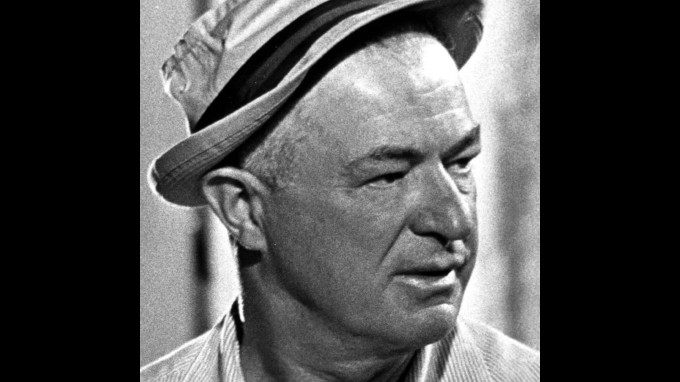
Juran primarily worked on B-westerns, but also the occasional costume swashbuckler. In 1957 he was assigned to his first science fiction movie, The Deadly Mantis. He then made a submarine movie starring Ronald Reagan for producer Charles Schneer at Columbia, which led Schneer, who had by then established his long-running collaboration with Ray Harryhausen, to assign Juran to work on the science fiction classic 10 Million Miles to Earth (1957). This led to Juran working on Schneer’s and Harryhausen’s first of many fantasy films based on classic Greek myth, The 7th Voyage of Sinbad (1958), which became both a box office and critical success. In 1962 he tried to recreate this success with Jack the Giant Killer, which he co-wrote and directed. However, the film received flack for its story, which blatantly ripped off the Harryhausen movie, and its stop-motion effects that deemed inferior to Harryhausen’s work.
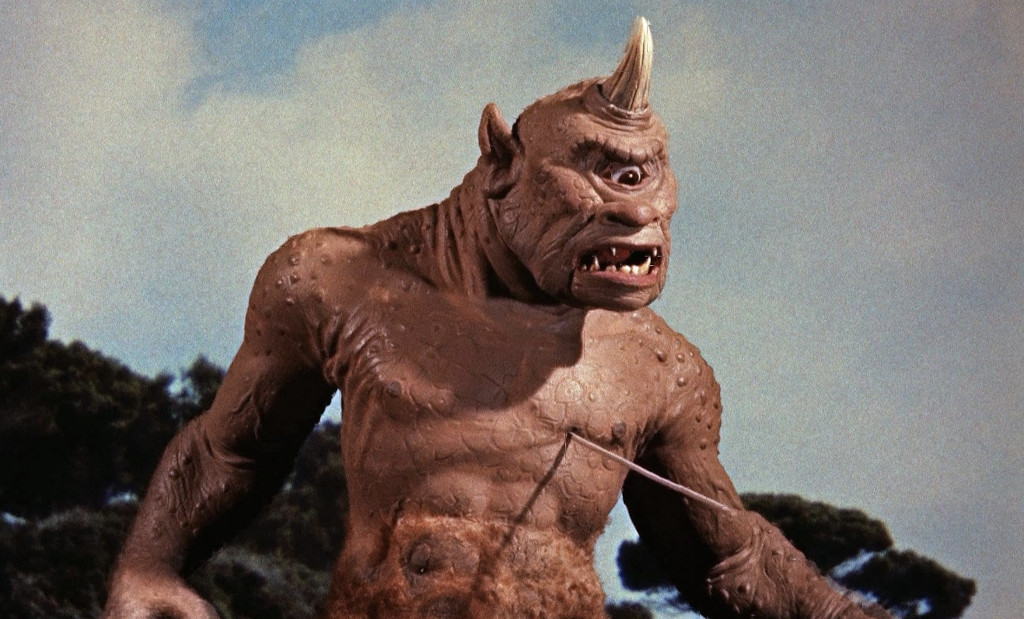
Juran might have made a good living at Universal or another major studio, but wanted to get away from major studio restraints, and often worked for smaller outfits or independent producers, and had no qualms over accepting low-budget and schlock. In a later interview, he said he saw himself as a technician creating films for a living and not as an “artist”; “I always felt that my movies were temporary. They were just pieces of celluloid. You couldn’t eat them. You couldn’t sleep in them. You couldn’t use them in any practical way. So, I never really took the picture business too seriously.”
Apart from The 7th Voyage of Sinbad, Nathan Juran is best known for the four science fiction movies he directed during a span of two years in 1957 and 1958: The Deadly Mantis, 20 Million Miles to Earth (1957, review), The Brain from Planet Arous (1958), and perhaps most famously, Attack of the 50 Foot Woman (1958). He returned to the genre (and Schneer) in 1964 with the H.G. Wells adaptation First Men in the Moon, co-written by Quatermass creator Nigel Kneale. He also directed episodes for a large number of SF TV series, particularly those produced by Irwin Allen. He directed his last film in 1973, before he returned to work in architecture.

Actor-turned-producer William Alland started his career as a member of Orson Welles’ legendary stage and radio theatre company Mercury Theatre. Among other things, he was part of the famous production of The War of the Worlds in 1938. As an actor he is probably best known for playing the newspaper reporter who ”narrates” Welles’ masterpiece Citizen Kane (1941).
Alland quickly moved up in his career, started producing radio shows and in the early fifties he joined Universal Studios as a movie producer. In 1953 the studio assigned Alland to produce a low-budget SF film in order to cash in on the 3D craze. The result was It Came from Outer Space (1953, review), which became one of the biggest grossers of the year for Universal, and is considered a genuine classic of the era today. It also brought together Alland and director Jack Arnold, who became the dynamic duo of science fiction at Universal during the mid-fifties. Eager to follow up on the success of It Came from Outer Space, the studio commissioned another 3D sci-fi from Alland and Arnold, but Alland, which became Creature from the Black Lagoon (1954), an even bigger success and considered a bona fide classic. The movie spawned two sequels, both of inferior quality, Revenge of the Creature (1955, review) and The Creature Walks Among Us (1956, review). The latter was hampered by the semi-flop of Alland’s costly SF epic This Island Earth (1955), which led Universal to start slashing its SF budgets. The result of the slashing is on full display in the studio’s following Alland-produced science fiction films, The Mole People (1956), The Deadly Mantis (1957) and especially in The Land Unknown (1957, review).

Disparaged at the situation at Universal, Alland struck out as a freelancer in 1958, and produced two low-budget SF pictures for Paramount, The Space Children and The Colossus of New York. While flawed, both are considerably more interesting than his last three SF clunkers for Universal. In between SF assignments, Alland also produced more “conventional” films, primarily westerns. In 1961 he tried his hand at directing a teen flick with Paul Anka in the lead, with dubious results. He produced a couple more films before leaving the film business in 1966. According to a Los Angeles Times obit, he then started developing and manufacturing sail boats, and during the last 10 years of his life worked part-time for the Los Angeles Times Poll. Like screenwriter Berkeley, Alland was one of the informants for the House Un-American Activities Committee, acknowledgeing his past as a member of the Communist Party and naming other members, many of whom were blacklisted, among them screenwriter Bernard Gordon, who worked on Earth vs. the Flying Saucers (1956) and The Man Who Turned to Stone (1957, review). Alland passed away in 1997.

Testimonies for the HUAC may have been something that brought together William Alland and screenwriter Martin Berkeley. Berkeley is notorious for naming, according to some sources, over 160 people as communists, more than any other informant, damaging the careers of multiple people in the show and culture business, including Dorothy Parker and Dashiell Hammett. Like Alland, Berkeley also started his career as a stage performer, before entering screenwriting in 1941. He primarily wrote B-movies, including three SF’s for Alland: Revenge of the Creature (1955), Tarantula (1955) and The Deadly Mantis (1957). He seems to have ended his screenwriting career in 1960, according to film historian Bill Warren, possibly because of his HUAC notoriety.

Lead actor Craig Stevens was a busy stage, film and TV actor for over six decades. Between 1941 and 1949 he was contracted to Warner, where he played leads in a number of smaller films, including the well-regarded old dark house comedy The Hidden Hand (1942), which IMDb lists as an SF movie for reasons that are beyond me. Primarily, though, he played secondary roles. Stevens went freelance in the 50’s, dividing his time between TV guest spots and films, in a successful but unassuming career. However, he rose to national fame in 1958 when he scored the lead in the detective show Peter Gunn, which ran for three years. Leading roles in other, short-lived TV series followed in the 60’s, as well as the spin-off movie Gunn (1967), directed by Blake Edwards. He did numerous guest spots on TV, and co-starred with David McCallum (whose death we read about just a few days ago) in the short-lived series The Invisible Man in 1975. His last film role came about in 1988. Parallel to his film and TV career, he appeared regularly on stage, both on and off Broadway. Stevens passed away in 2000.

Co-lead William Hopper had a somewhat similar career to Craig Stevens, up until WWII, where both also served. Born into a family of celebrities, his father a singer, comedian and theatre producer, and his mother the infamous gossip columnist Hedda Hopper, he naturally slipped into acting, but suffered from stage fright and a lack of ambition toward the trade, and after the war instead worked for nine years as a car salesman. In an interview with the Daily Review, he said: “I didn’t even think about acting much until a friend, director Bill Wellman, asked me to do a part in The High and the Mighty“. He eventually got over his stage fright as well. Hopper did substantial supporting roles i A movies and occasional leads in B-movies. He played Dr. George Fenton in George Pal’s Conquest of Space (1955, review), and leads in The Deadly Mantis (1957) and 20 Million Miles to Earth (1957). He found fame on TV, when he was cast as investigator Paul Drake, right hand man to Raymond Burr’s Perry Mason, as role he performed in over 270 episodes between 1957 and 1966. After the show ended, he declined further TV and movie roles, professing to be fed up with the business. Hopper had a difficult relationship with his controversial mother. Hedda Hopper was an extremely vocal supporter of the HUAC blacklist, a possible reason as to why William Alland assigned her son to The Deadly Mantis. Hopper died of complications related to his chain smoking on 1970, only 55 years of age.

Alix Talton, born Alice Talton in 1920, studied singing and dancing and honed her acting skills in summer stock, and also worked as a model. Her fame as Miss Georgia served as a spring board to the movies, in which she first appeared in 1941. She had bit-parts and occasional leads in B-movies, and gained some fame for her dual roles as next-door neighbours Myrna and Myrna on the TV show My Favourite Husband between 1953 and 1955. The mid-fifties also saw Talton in minor roles in the classic rock ‘n roll movie Rock Around the Clock (1956) and Alfred Hitchcock’s The Man Who Knew Too Much (1956). The Deadly Mantis was her only SF movie. Her career waned in the early 60’s.

In a minor supporting role we see Phil Harvey, who is probably best remembered for his supporting roles in the science fiction movies The Deadly Mantis (1957), The Land Unknown (1957), The Monolith Monsters (1957, review) and Jack Arnold’s Monster on the Campus (1958). Bit-part actress Helen Jay can be spotted in She Devil (1957, review), The Deadly Mantis (1957), The Space Children (1958), Space Master X-7 (1958) and I Married a Monster from Outer Space (1958). Fans of SF TV will blink and miss Michael Forest, theatrical actor and bit-part movie actor, who in later years made a career out of providing English dubs for a whole host of Japanese anime films and TV series, best known, perhaps, for voicing Prince Olympus in Power Rangers Lightspeed Rescue (1999). Twilight fans might recognise him as one of the three leather-clad aliens in the Twilight Zone episode “Black Leather Jackets” (1964). Trekkies know him for playing Olympus in the episode “Who Mourns for Adonais?” (1967).
Janne Wass
The Deadly Mantis. 1957, USA. Directed by Nathan Juran. Written by Martin Berkeley & William Alland. Starring: Craig Stevens, William Hopper, Alix Talton, Donald Randolph, Pat Conway, Florenz Ames, Paul Smith, Phil Harvey, Floyd Simmons, Paul Campbell, Helen Jay, Michael Forest. Music: Irving Gertz, William Lava. Cinematography: Ellis Carter. Editing: Chester Schaeffer. Art direction: Alexander Golitzen, Robert Clatworthy. Makeup: Bud Westmore. Sound: Leslie Carey. Leon Leon. Special effects: Cleo Baker, Fred Knoth. Visual effects: Clifford Stine. Produced by William Alland for Universal.

Leave a comment